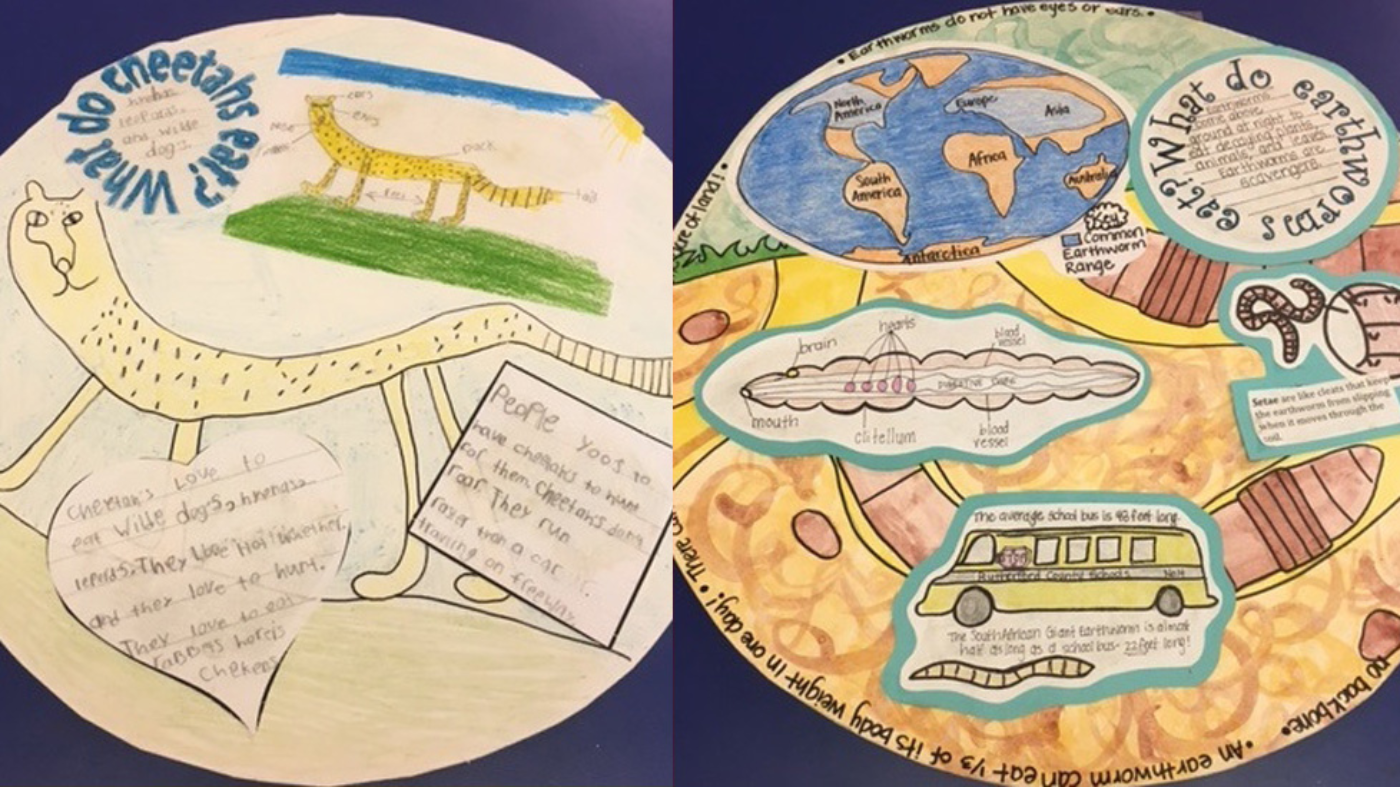Do your students have research questions that they are “wondering” about? For example: How is water cleaned? How smart is an octopus? What do earthworms eat?
Elementary teacher Angela Bunyi encourages her students to ask these sorts of questions about nonfiction topics and then research and answer them in a published project. In Bunyi’s experience, “If you want to assess a student’s ability to research and apply nonfiction text features, you can leave their query as broad as any question they might ponder.”
Bunyi adapted the Wonder Bubbles research project from fellow teacher Chandra Verbic, and she has seen students from first to fifth grade enthusiastically answer their “wonder” questions with great success.
Encourage Nonfiction Reading on Topics of Interest
Before beginning the Wonder Bubbles research project, invite your students to wonder within a particular curriculum area so their research falls in line with specific content you are studying. The book lists below feature hundreds of nonfiction titles that can spark students’ questions about science, history, animal facts, and more.
- 31 Favorite Nonfiction Books for Grades 1–2
- Nonfiction Favorites for Grades 3-5
- 30 Nonfiction Titles Every Classroom Library Needs
- Must-Read Women in History Book List
- The Thrilling Nonfiction Who Would Win? Books
Not sure which books will appeal most to your students? Learn how to help young readers pick the perfect nonfiction book.
Elements of a Wonder Bubble
The Wonder Bubble posters your students create should consist of their research question prominently asked and answered, along with a set number of displayed nonfiction text features. These features can include a combination of the following:
- Comparisons
- Close-ups
- Captions
- Photographs
- Labels
- Charts/graphs
- Maps
Create a Wonder Bubble
Step 1: Collect a series of “wonders” from your students. Send this list to your school librarian and ask for books on those topic areas to supplement the books in your classroom library. You can also compile a list of research-friendly websites students are allowed to use.
Step 2: Have students collect a series of “dash facts.” These are just quick facts that are not necessarily complete sentences. When they are ready to make their posters, they can choose which facts to include and how they want to present them.
Step 3: Review nonfiction text features with your students using books around your classroom and from the school library. Text features you may want to review include the table of contents, index, glossary, headings, sidebars, pictures and their captions, and labeled diagrams.
Step 4: Help students stylize their questions for their poster board presentations. You can type up their “wonders” using a circular format or other text embellishments. For the posters, cut large circles out of standard poster board for the students to use. You can trace the base of a trash can or other large round object to make a template for cutting out the posters.
Step 5: Now it’s time for students to organize their research and incorporate nonfiction text features into their Wonder Bubble posters. Lined and unlined paper cut into fun shapes, colored pencils, construction paper, and more can be used to make their research more eye-popping.
Step 6: Have students present their final projects to their peers!
More Research Projects, Tips, and Tricks
Bunyi had this to say about the success of Wonder Bubbles in her classroom: “When students can not only research the answer to a question, but present it with a chart, a close-up, or a picture with captions, I know they have taken it to the next level.”
If you loved this research project, check out the 60-Minute Research Project inspired by the Who Would Win? nonfiction series. And for tips on teaching research reports to young writers, review this step-by-step guide.
Shop popular nonfiction books below! You can find all books and activities at The Teacher Store.
